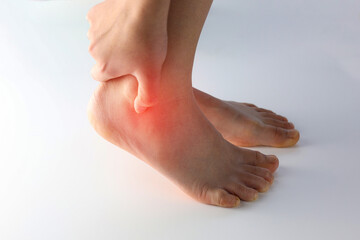Overcome Tendinosis pain with expert care at Full Circle Therapy and Wellness.
Difference Between Tendinitis and Tendinosis
Tendinitis and tendinosis are distinct conditions affecting tendons, often confused due to similar symptoms. Tendinitis is an acute inflammation of the tendon, typically caused by overuse, repetitive strain, or sudden injury. It involves active inflammatory processes, leading to pain, swelling, and warmth in the affected area.
Tendinosis in contrast, is a chronic, degenerative condition. It occurs when repetitive microtrauma or inadequate healing leads to collagen breakdown within the tendon, resulting in weakened tissue structure without significant inflammation. Tendinosis is marked by persistent pain, stiffness, and reduced function, often requiring more complex treatment than tendinitis.
Tendinitis Treatment
Tendinitis generally improves with rest to reduce inflammation and allow the tendon to heal. Ice, anti-inflammatory modalities, and gentle stretching may also help. Crucially, addressing whole-body causes of tissue breakdown is essential. This includes evaluating biomechanics, muscle imbalances, or improper movement patterns that may contribute to tendon overload. Full Circle physical therapists will identify these factors through comprehensive assessments, ensuring long-term recovery and prevention of recurrence.
Tendinosis Treatment
Tendinosis requires a proactive approach to restore tendon health, as rest alone is often insufficient. At Full Circle, we specialize in evidence-based treatments to help you recover from tendinosis and regain full function. Our approach includes:
1. Loading the Tendon Through Targeted Exercise: Controlled, progressive exercises are critical to stimulate tendon repair and strengthen collagen fibers. Our therapists design individualized programs to gradually load the tendon, promoting healing without overloading the tissue.
2. Stimulating Fibroblast Activity: Fibroblasts are cells responsible for producing collagen and repairing tendon tissue. Techniques including manual therapy, myofascial decompression (cupping) or modalities like ultrasound may be used to enhance fibroblast activity, supporting tendon regeneration. There are also physician initiated treatment options to facilitate fibroblast activity.
3. Assessing Whole-Body Causes of Tissue Breakdown: We will again look for the root cause evaluating biomechanics, muscle imbalances, or improper movement patterns that may contribute to tendon overload. Our team conducts thorough evaluations to identify and address these underlying factors, ensuring a holistic recovery plan.
If you struggling with persistent tendon pain book your appointment today and start your journey to recovery with Full Circle.
Our skilled physical therapy staff will create a personalized plan to load your tendon with precise exercises, stimulate tissue repair, and address whole-body factors contributing to your pain. From advanced manual therapy to comprehensive biomechanical assessments, we’re here to help you move pain-free again. Don’t let tendinosis hold you back.

